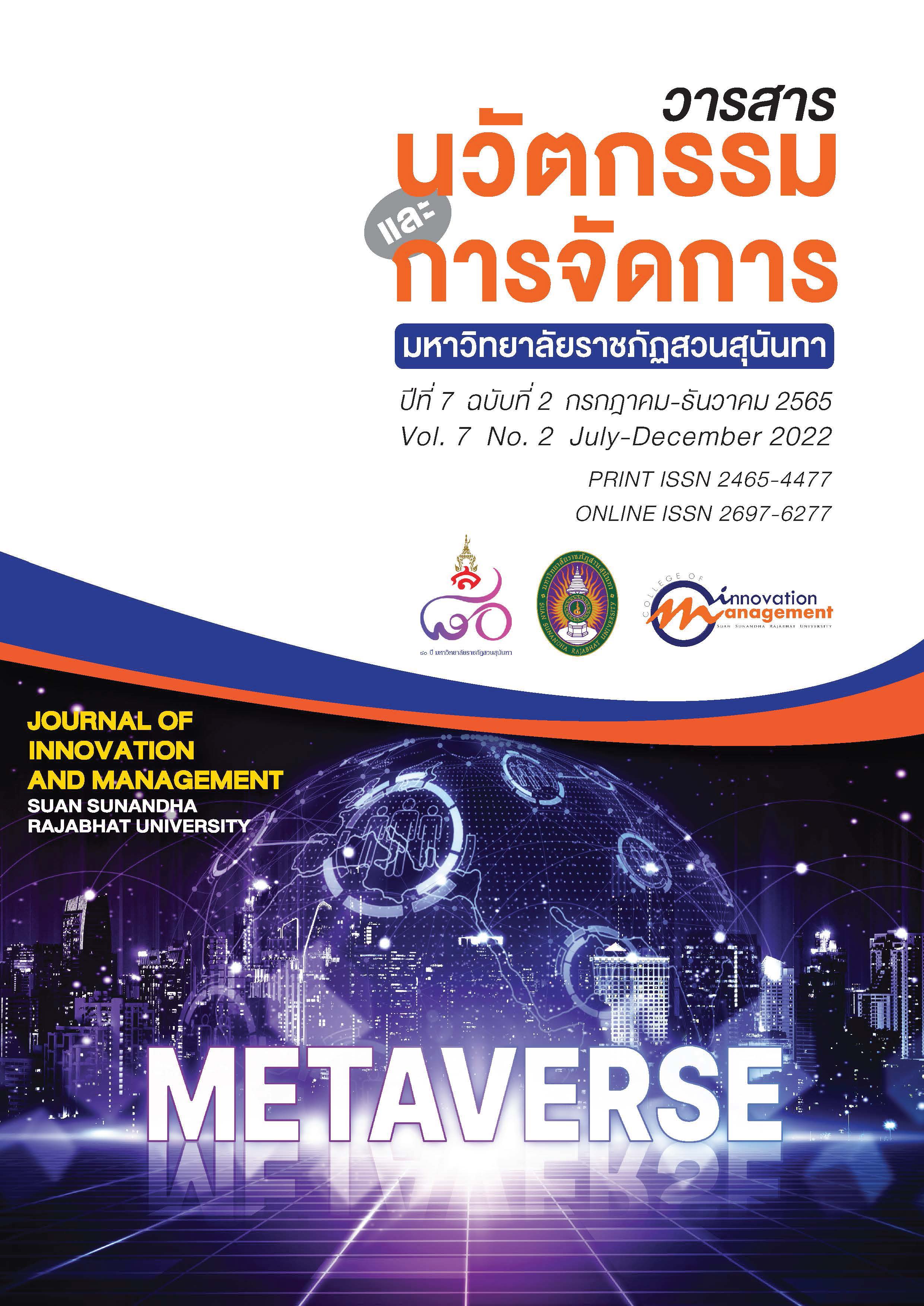The Mediating Role of Employee Perceived Stress in the Relationship Between Job Stressors and Absenteeism: The Case of A Chinese Construction Company
Keywords:
Work Role Stress, Job Stress, Perceived Stress, AbsenteeismAbstract
The objectives of this study were to examine different sources of work role stress among Chinese employees and the mediating role of employee perceived stress on the relationship between job stressors and absenteeism. The sample included 385 Chinese employees from 4 different departments at a construction company. The results from descriptive and path analyses found three components of work role stressors affecting perceived stress including quantitative overload, role ambiguity, and lack of authority. Perceived stress was also found to significantly affected absenteeism and that perceive stress is a mediator in the relationship between work role stressors (quantitative overload, role ambiguity, and lack of authority) and absenteeism.
References
Allen, S. G. (1983). How Much Does Absenteeism Cost? The Journal of Human Resources, 18(3), 379-393.
Baron, R. M., and Kenny, D. A. (1986). The moderator–mediator variable distinction in social psychological research: Conceptual, strategic, and statistical considerations. Journal of Personality and Social Psychology, 51(6), 1173–1182.
Belita, A., Mbindyo, P. and English, M. (2013). Absenteeism amongst health workers – developing a typology to support empiric work in low-income countries and characterizing reported associations. Hum Resour Health, 11, 1-10.
Cucchiella, F., Gastaldi, M., and Ranieri, L. (2014). Managing Absenteeism in the Workplace: The Case of an Italian Multiutility Company. Procedia - Social and Behavioral Sciences, 150, 1157-1166.
Davidson, M.J., VENO, A. (1980). Stress and the policeman. In White Collar and Professional Stress (Edited by COOPER CL, MARSHALL J). London: John Wiley Sons.
Dewe, P. (1991) Measuring work stressors: The role of frequency, duration, and demand, Work and Stress. An International Journal of Work, Health and Organisations, 5(2), 77-91.
Frankenhaeuse, M.,and Gardell, B. (1976). Underload and Overload in Working Life: Outline of a Multidisciplinary Approach. Journal of Human Stress, 3, 35-46.
Haswell, M. (2003). Dealing with employee absenteeism. Management Services, 47(12), 16-17.
Hayes, A. F. (2013). Introduction to mediation, moderation, and conditional process analysis: A regression-based approach. New York: Guilford Press.
Hill, J.M.M., and Trist, E.L. (1955). Changes in Accidents and other Absences with Length of Service: A Further Study of their Incidence and Relation to each other in an Iron and Steel Works. Human Relations, 8(2), 121–152.
Jin, X., Sun, I.Y, Jiang, S., Wang, Y., Wen, S. (2018). The relationships between job and organizational characteristics and role and job stress among Chinese community correctional workers. International Journal of Law, Crime and Justice, 52, 36-46.
Kocakula, M.C., Kelly, A.G., Mitchel, K.M., and Ruggieri, M.P. (2016). Absenteeism Problems and Costs: Causes, Effects and Cures. International Business and Economics Research Journal, 15(3), 89-96.
Lazarus, R., and Folkman, S. (1984). Stress, Appraisal, and Coping. New York: Springer.
Lu, L., Kao, S., Siu, O. and Lu, C. (2011). Work Stress, Chinese Work Values, and Work Well-Being in the Greater China. The Journal of Social Psychology, 151(6), 767-783.
Lu, L., Kao, S.-F., Siu, O.-L., and Lu, C.-Q. (2010). Work stressors, Chinese coping strategies, and job performance in Greater China. International Journal of Psychology, 45(4), 294-302.
Nunnally, J. C. (1978). Psychometric theory. 2d ed. New York: McGraw-Hill.
Martocchio, J.J., and Harrison, D.A. (1998). Time for Absenteeism: A 20-Year Review of Origins, Offshoots, and Outcomes. Journal of Management, 24(3), 305-350.
Phillips, A.C. (2013). Perceived Stress. In: Gellman, M.D., Turner, J.R. (eds) Encyclopedia of Behavioral Medicine. Springer, New York, NY.
Pickett, A,C., Valdez, D., and Barry, A. E. (2020). Does It Work for Everyone? The Influence of Demographic Variables on Statistical Reliability. Health Behavior Research, 3(2), 1-12.
Rench, J., Caplan, R. (1972). Organizational stress and individual strain. In The Failure of Success (Edited by MARROW AJ), pp. 31-66.
Truman, D. (2003). Ohio companies try to encourage employees not to take sick days. Knight Ridder Tribune Business News, 1.
Wang, P., Chu, P., Wang, J., Pan, R., Sun, Y., Yan, M., Jiao, L., Zhan, X. and Zhang, D. (2020). Association Between Job Stress and Organizational Commitment in Three Types of Chinese University Teachers: Mediating Effects of Job Burnout and Job Satisfaction. Frontiers in Psychology, 11, 1-12.
Downloads
Published
How to Cite
Issue
Section
License
Copyright (c) 2022 Journal of Innovation and Management

This work is licensed under a Creative Commons Attribution-NonCommercial-NoDerivatives 4.0 International License.
See Publication Ethics https://so03.tci-thaijo.org/index.php/journalcim/Ethics






